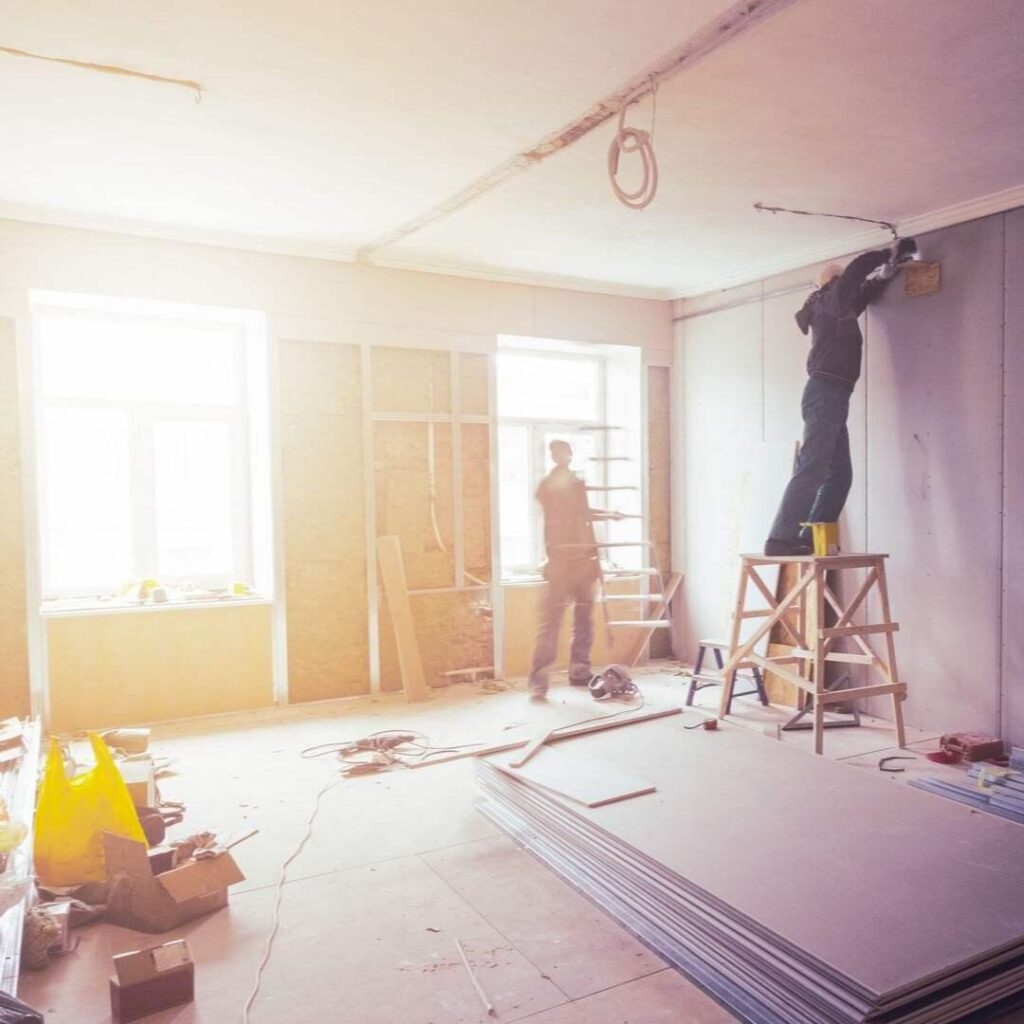Variety of Options to Choose from
Plastering walls is an essential part of any home construction or renovation project – it leaves a smooth, sturdy surface that you can admire for years to come.
Plastering walls is skilled work that needs careful execution. Plastering your walls gives them a strong, smooth, and long-lasting finish. In addition, a well-plastered room helps keep old walls in good condition, provides the perfect base for paint and helps with soundproofing.
The type of wall and surface you want to plaster will determine the plaster type you need and how it is applied. For example, plastering a new wall or plasterboard is different from plastering an old masonry or existing wall.
You can do minor plastering or “touch-ups” yourself, but entire walls and rooms are best left to professionals.
However, that doesn’t mean you can’t save money yourself by preparing the area and refurbishing old masonry.
Plastering walls in a new building
Plastering walls in a new home or addition requires a different approach than a renovation project. In new construction, you can apply plaster directly to the gypsum board.
Here’s how to apply plaster to a new wall:
- First, countersink the screw heads of the gypsum board and tape the joints between the boards.
- Metal angles should be used for a neat finish at the outside corners.
- Applying a layer of plaster.
- All block walls to be plastered should be given a coat of sand and cement plaster, called scratch plaster.
- Allow this coat to cure before scratching it with a float and nails in a swirling motion to provide a firm base for the following coat, which is applied while the first scratch coat is still green but not totally dried.
- These two coats should be used to level and fill depressions and irregularities in the wall.
- At this point, the professional plasterer should assess whether the plaster has cured sufficiently and apply the finishing plaster.
As this is effectively the finished surface of the walls and ceilings of your new home, it should be smooth and free of spackle markings or defects.
Many new homes are not plastered at all
Usually, these are interior walls or stud walls, but sometimes the inner sides of exterior walls are covered with plasterboard before being painted or wallpapered – no plaster base.
The main reason for this is, of course, cost. Therefore, a plasterer isn’t required. Instead, the screw holes are filled, and the joints between the boards are taped (scrim). Finally, a joint compound is applied, and you’re good to go.
This process is called “tape and jointing.”
This method is cheaper than plastering, but care must be taken – if the plasterboard gets too wet, it becomes weak, and the paper surface of the plasterboard can be easily damaged if you’re not careful.
Plastering walls; a renovation project
When plastering walls as part of a renovation project, further preparatory work is often required to ensure that the old walls are ready for plastering.
- Before your plasterer begins, clean out the room, cover carpets, and cover anything that can’t be removed from the room.
- Your plasterer will require access to a water source, so make sure the path to the water source doesn’t go all the way through your house without dragging plaster and dirt.
- Remove old baseboards before plastering – most plasterers find it easier to plaster to an inch or two above the floor than to paint to the top of the baseboards. However, if you want to leave your baseboards in place, most plasterers should be able to plaster up to the existing baseboards, even if it is time-consuming.
Prepare your walls
If you want a new coat of paint for old plaster walls, you’ll need to prepare your walls.
- Before cleaning the masonry underneath, the damaged and crumbling old plaster must be removed from the walls.
- Scrape off any old pieces of wallpaper and apply an adhesive, such as a diluted PVA solution. Alternatively, a product with small sand-like granules that stick to the wall and give an excellent base for a new coat of plaster might be used.
- Add a plaster primer that you paint directly onto the walls.
Once dry, your plasterer can apply a base coat directly.
Is it possible to plaster directly onto a brick wall?
Although it is not usual nowadays, it is still sometimes necessary to plaster directly onto old brickwork or blocks. This is usually done on small wall sections where parts of the old plaster have come loose and are often done as a “touch-up” rather than on the entire wall.
The state of these walls must be inspected and, if necessary, rectified – crumbling old masonry will not tolerate a new coat of plaster. Therefore, before you can start plastering, you need to do the following:
- The surface of the old masonry must be brushed off with a wire brush.
- Then a layer of bonding or browning, a plaster-like substance, is applied to achieve the same thickness as the old masonry.
- Then a plasterer can strip the entire surface.
Wet plastering
Plastering was more difficult and expensive before the invention of the plasterboard.
However, some still preferred plastering directly on unplastered masonry or blocks, called “wet plastering,” because it improves soundproofing.
In this process, cement plaster or gypsum base (called a scratch coat) is first trowelled directly onto the masonry before being covered with a thin primer.
The disadvantage of wet plastering is that it takes much longer to dry than a thin coat on plasterboard and can also crack.
Save your time and money by plastering over plasterboard
When renovating, it is often easier to plaster over gypsum board than unplastered masonry, as only a base coat is required – this is generally the cheapest option. In addition, gypsum board can be attached to bare walls by screwing it to wooden laths, so an insulating layer can be added if needed.
In other cases, gypsum boards can be “dabbed” onto bare walls.
This involves gluing small gypsum board sheets to the wall with adhesive strips.
Cutting the plasterboard yourself will save your plasterer time and money in getting the job done. A hand saw will do.
You can also attach the plasterboard to the wall yourself. The easiest way is to screw them directly to the wooden battens attached to the wall and ceiling.
The joints between the boards must be covered with fabric tape before the plasterer pulls them.
Need plastering service for your property? Contact Brisbane Plaster Pro now to get the job done.



